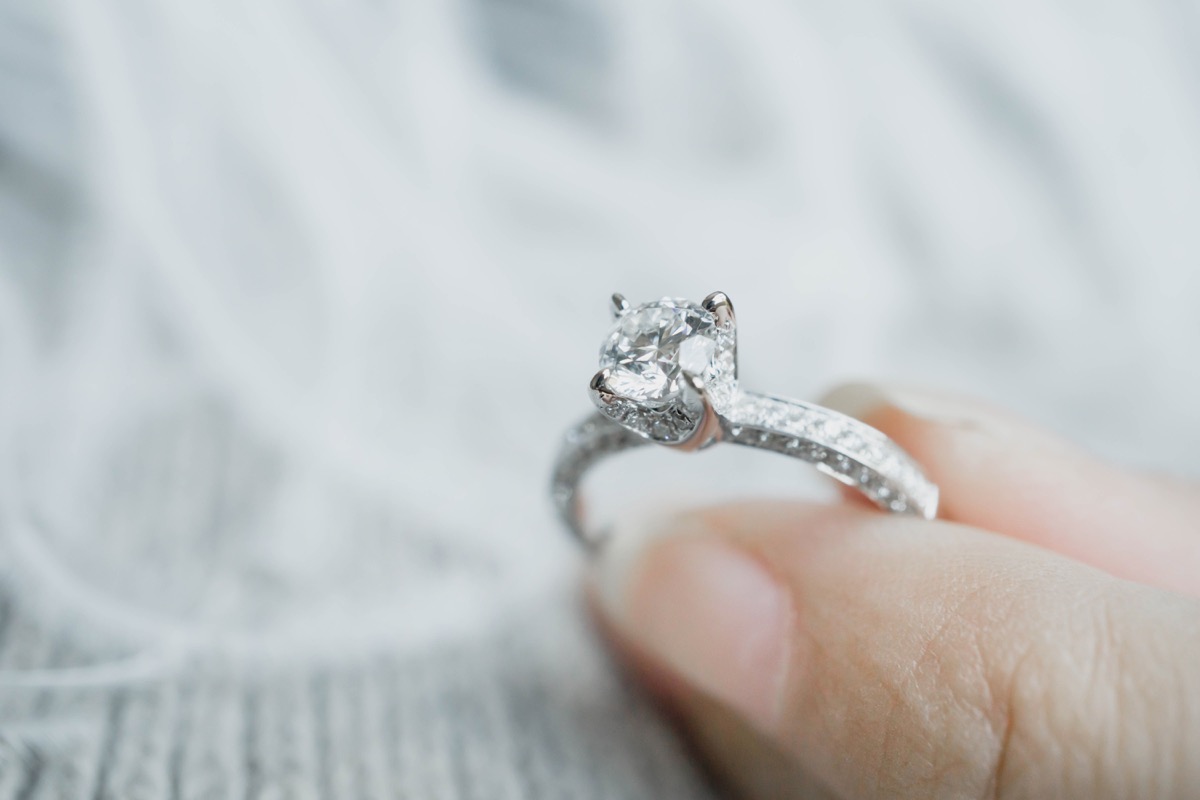If You and Your Spouse Do This Together, You're 3.5 Times More Likely to Divorce
Here's how the wedding itself may impact your odds of divorce.

When you tie the knot with your partner you want it to last forever, but of course, we know that not all unions withstand the test of time. Though the oft-cited statistic that half of marriages end in divorce has been disproven, more accurate estimates are still high: in recent years, couples have been divorcing at a pace of one third the rate of new marriages, according to a 2016 report from the Centers for Disease Control and Prevention (CDC). Per their data, roughly 4.6 million Americans became newly married that year, and 1.6 million became divorced.
Luckily, you are not a statistic, and your relationship is about so much more than a role of the marital dice. The choices you make in your relationship can impact your odds of a lifelong partnership. Read on to find out which one decision makes you and your spouse 3.5 times more likely to divorce.
RELATED: If You and Your Partner Can't Agree on This, It's Time to Break Up.
If you spend more than $20k on a wedding, you're 3.5 times more likely to divorce.

For decades, the wedding industry has worked to subtly convince Americans that high wedding spending is linked with longer-lasting marriages. But according to a 2014 study published in the journal Social Science Research Network, increased spending above a certain threshold is actually linked to higher rates of divorce. The research team found that the risk of divorce is 3.5 times higher for people who spend more than $20,000 on their wedding as compared to those who spend between $5,000 and $10,000 on their nuptials. Meanwhile, "relatively low spending on the wedding is positively associated with duration among male and female respondents."
Technically these findings would put the average American at an increased risk of divorce. In 2019, the average cost of a wedding was $28,000, though that number has taken a significant dip in the past two years, thanks to the pandemic. In 2020, average wedding spending came to $19,000, according to data gathered by the wedding website The Knot. That number is expected to rebound as the pandemic subsides.
RELATED: If Your Partner Has These 4 Qualities, They're More Likely to Cheat on You.
Here's how the study worked.

The research team reached this conclusion by polling over 3,000 married or once-married individuals with a 40-question survey. This 5-minute questionnaire probed topics pertaining to a person's current marriage or past marriage, including "marital status, marriage duration, children, length of time dated, feelings and attitudes at the time of wedding proposal, honeymoon, engagement ring expenses, wedding attendance, total wedding expenses, age, age at marriage, gender, race/ethnicity, education, employment, household income, region of residence, religious attendance, and differences in age, race, and education between respondent and partner."
After controlling for various demographic and relationship characteristics, they ultimately determined that high wedding spending was correlated with higher rates of divorce.
Wedding spending wasn't the only factor associated with an increased risk of divorce.

If financial stressors play a role in the rate of marriage dissolution, it should be no surprise to learn that pricier engagement rings were linked with higher rates of divorce, too. "Specifically, in the sample of men, spending between $2,000 and $4,000 on an engagement ring is associated with a 1.3 times greater hazard of divorce as compared to spending between $500 and $2,000," the study found.
However, it's worth noting that those who spent over $8,000 on an engagement ring had lower rates of divorce. This may be because those spending in the middle range may be stretching a limited budget, while those spending in the higher range can do so more comfortably without going into debt or causing financial strain. Most likely, there were also fewer respondents spending in the uppermost range, meaning the data would be more limited.
The researchers also found that certain interpersonal dynamics within the couple were associated with higher divorce rates. "In the sample of all persons, greater differences in age and education between husband and wife and reporting that one's partner's looks were important in the decision to marry are both significantly associated with a higher hazard of divorce," the team wrote.
For more relationship news sent directly to your inbox, sign up for our daily newsletter.
Certain factors may mean your marriage will stand the test of time.

The team also identified several factors that seemed to be linked with long-lasting marriages. These included having a relatively high household income, regularly attending religious services, and having a child.
When it came to the wedding itself, the researchers determined that "having high wedding attendance and having a honeymoon (regardless of how much it cost) are generally positively associated with marriage duration." In other words, the evidence suggests that pulling off a lower-cost wedding with a high headcount and then going on a honeymoon—a feat for any wedding budget—is the ticket to marital bliss.
RELATED: If You and Your Partner Disagree About This, You're Twice as Likely to Divorce.





















